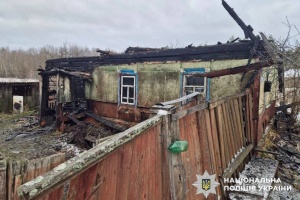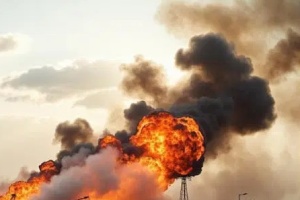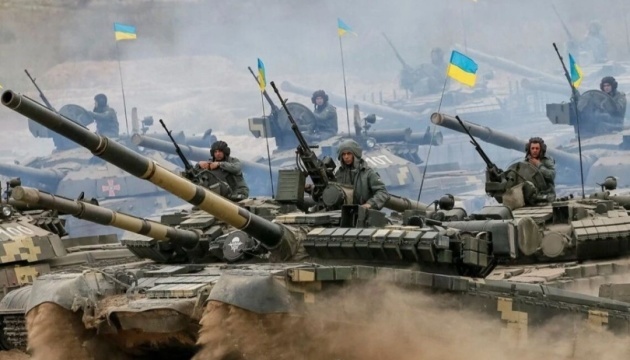
How Ukraine’s Armed Forces seized strategic initiative: 2022 review
Another important milestone has been passed: 300 days have passed since the full-scale Russian invasion of Ukraine.
Throughout this time, the Armed Forces of Ukraine broke virtually all plans conceived by the Russians, also stunning the whole world with their courage and military skill. And most importantly, more than 100,000 occupiers were killed in action. With their readiness to heroically defend their Homeland, the Ukrainian forces today inspire enslaved nations to fight for their own dignity.
In no case shall we underestimate the enemy, but we should not overestimate them either because what was believed to be the world’s “second-strongest army,” when it crossed the Ukrainian border on February 24, really outmanned the Ukrainian forces by an order of magnitude, including in terms of arms stocks.
It’s been 300 days of the Great War... There is not much left until the end of 2022, the year that will perhaps be forever imprinted in the DNA of every Ukrainian. So how has the Ukrainian Army changed over this time and what are the greatest successes to recall?
FROM INFANTRY WEAPONS TO MODERN AIRCRAFT SYSTEMS: HOW DID THE ARMY CONFRONT THE OCCUPIERS IN THE FIRST, HARDEST MONTHS OF THE WAR, AND WHAT WEAPONS DO THEY HAVE TO NOW?
February-March
Until February 24, the U.S. and its NATO allies had mostly predicted that the Ukrainians would have to pursue guerilla resistance. In January, the deliveries began of Javelin and NLAW anti-tank systems. These systems allowed to conduct an "ambush war" and actually became the main weapon to repel the onslaught of the Russian killer panzer force.
"American and British ATGMs played an important role in stopping convoys of enemy armored vehicles on the approaches to our cities, destroying them by dozens and hundreds. This was an important factor," says Oleksandr Kovalenko, a Ukraine-based military observer with the Information Resistance OSINT group.

Stinger MANPADS
But the Stinger man-potable air defense systems played a much more important role.
It should be recalled that one of the main problems faced by the Armed Forces in the first days of the war was massive air attacks. Dozens of enemy helicopters and warplanes were flying over Kyiv region, posing a colossal threat to the capital, which at that time had no sufficient number of air defense systems in place.
Early April, a total of about 1,500 MANPADS were delivered to Ukraine. This changed the situation in the sky – Russia was suffering insane losses in terms of downed aircraft. After all, most of such losses were inflicted in March, when the enemy had not adapted to the new conditions of war. In the following months, enemy aircraft would mostly operate without approaching the front lines.
April-May
Seeing that Ukraine stood up, as well as being pressured by own voters, Western politicians had to make new decisions. At first, these decisions were being hindered as much as possible by Russian lobbyists. For example, through the special psyop, narratives were advanced that in Ukraine there is terrible corruption, that all defense aid will be siphoned and nothing will reach the front, that the Ukrainian military doesn’t know how to use western weapons and won’t be able to maintain them. Also, it was claimed, that Ukraine would lose anyway so it is better to think about own economies.
Here it is worth emphasizing the powerful efforts of Ukraine’s diplomacy, which, supported by the victories of the Armed Forces, destroyed this wall of bureaucracy.
Failing to achieve gains on the fronts, Russia increasingly opted for terror, obliterating cities and launching missile attacks on civilian objects. Ukraine desperately asked the West to close the sky. But the answer of partners was always the same: "We can’t use our own air defense systems to down Russian missiles because this will provoke Putin to escalate."
The first breakthrough was to get the Soviet-era S-300 air defense systems from Slovakia, as well as some spare parts needed to repair warplanes.
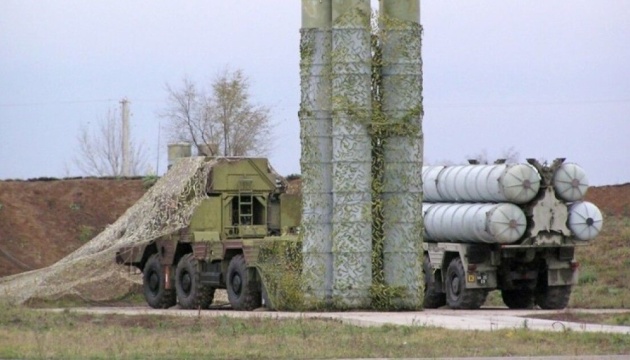
S-300 anti-aircraft systems
This help had a significant impact on the war's progress.
While at the onset of the invasion reports of downing of Russian missiles were mostly isolated, in the following months they began to appear more and more often. The Armed Forces would destroy about half of the missiles launched at Ukraine.
***
The fighting moved eastward, where fierce artillery duels broke out. There were much more corresponding systems in Russia: in some places the ratio could be 10 to 1 or even 20 to 1 in the enemy favor.

CAESAR self-propelled guns
Late April, the first defense meeting on Ukraine took place — the so-called Ramstein format. The key topic was artillery assistance to the Armed Forces. It was decided that the USA, Canada, and Australia would jointly supply 100 M777 howitzers of a NATO-standard 155-mm caliber (90 of them were to be supplied by the U.S.). And this somewhat stabilized the situation.
M777 howitzers opened the door for other, more modern long-range systems.
"Ukraine began to receive self-propelled artillery installations – not of the Soviet era, but specifically of the Western — NATO model. France became the first country to provide Ukraine with CAESAR self-propelled guns. Later came Panzerhaubitze 2000, Zuzana, DANA, M109, Krab systems, and so on," says Oleksandr Kovalenko.
June-July
In June, the largest deliveries of NATO armored fighting vehicles took place. Five countries shipped to Ukraine M133 armored personnel carriers (a total of more than 300 units). Dozens of Soviet-made IFVs were also supplied from Eastern Europe. Great help was provided by Australia (60 Bushmaster armored vehicles).
An important element of strengthening the Ukrainian Army was the transfer of Harpoon anti-ship systems.
"When we only had Neptune in our arsenal, Ukraine did not have the opportunity to boldly use this complex." After all, there was a very high risk that, when spotted in an open space or on combat duty, it would be destroyed by Russian aviation," emphasizes the military observer.
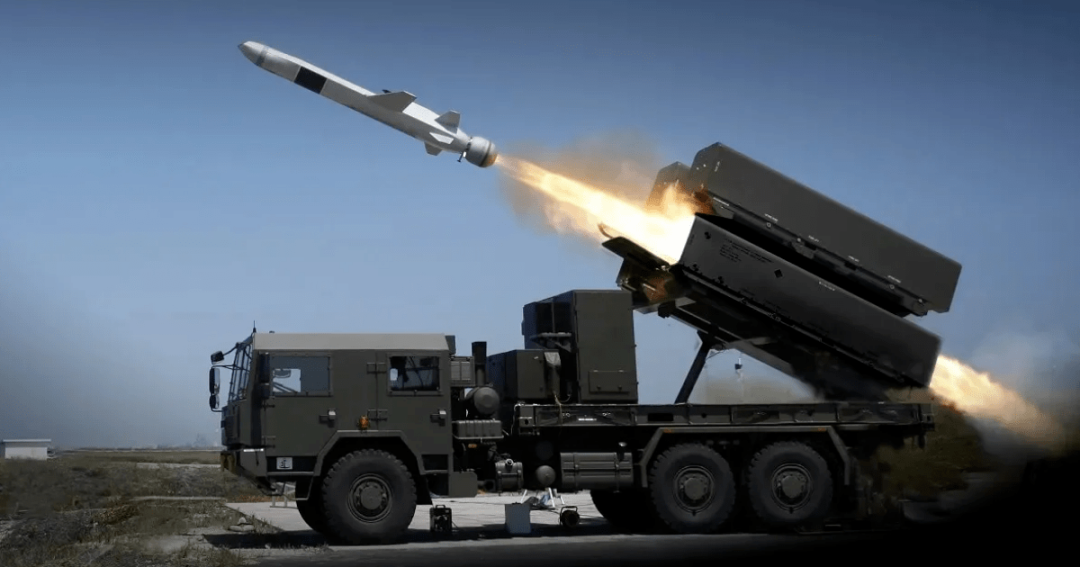
Harpoon anti-ship missiles
And had the enemy been able to destroy Neptune, the gates to Odesa region would have been open for them. And then the landing force would strike from the Black Sea.
"It was the Neptune that deterred the enemy because the destruction of an amphibious ship, or more than one, would deliver a serious blow not only to the reputation, but also to the Russian Marines," says Kovalenko.
Simply put, a couple of shots with Neptune would immediately take out several hundred Ruscists.
"After Ukraine received the Harpoons, its forces began to use the Neptune more boldly. And it was this system that ultimately destroyed the Moskva flagship cruiser. Harpoon missiles sunk the Vasiliyl Bekh tugboat, which had been bringing supplies to the then-captured Snake Island. As a result, Russia had to give up plans to seize Odesa," Oleksandr Kovalenko emphasized.
Another important delivery during this period was the British Alvis Stormer short-range air defense system.
"Long before the deliveries of MIM-23 HAWK, Crotale, Iris-T, and NASAMS, the first was the Alvis Stormer air defense system, which was handed over by Great Britain. At that time, this system significantly strengthened the capabilities of the Armed Forces of Ukraine," the military expert says.
But the most significant event of the summer was the transfer of HIMARS and M270 systems.
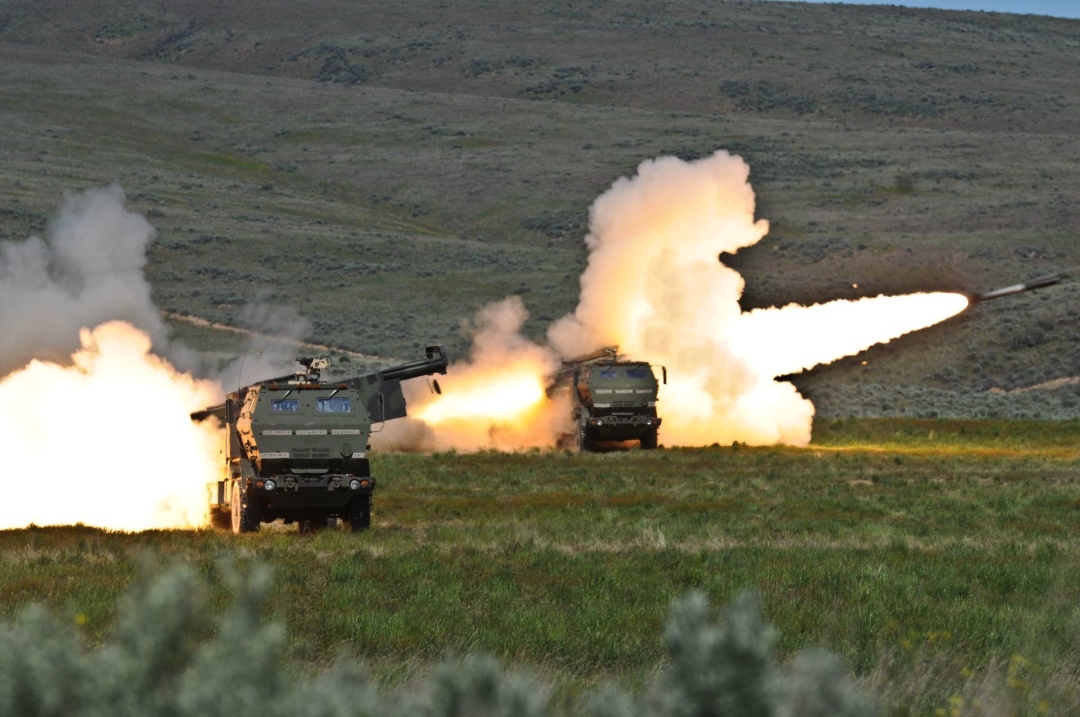
HIMARS
Our command has constantly stressed that Ukraine critically needs systems capable of hitting targets behind enemy lines because almost the entire supply of long-range missiles for the Smerch, Vilkha, and Tochka-U systems had been exhausted.
Ukraine received the first MLRS at the end of June. And it was this weapon that became decisive in July. Dozens and possibly hundreds of ammunition depots, military bases, and command posts have been destroyed – and continue to be hit. Ukraine gained a significant advantage at a range of 40–80 km from the front line, where Russia no longer has a massive advantage in the number of systems. And the most important thing is that Russian MLR systems can’t be compared with Western models in terms of accuracy and efficiency.
"These systems significantly expanded the capabilities of the Armed Forces of Ukraine in terms of fire pressure on enemy positions. And the main thing is high-precision pressure,” stresses Oleksandr Kovalenko. “The fact that the Russians have not yet been able to destroy any of these MLRSs also speaks volumes.”
August-September
In early August, it became known that the Armed Forces received the first AGM-88 HARM air-to-air missiles capable of detecting and hitting enemy air defense systems at a long range.
"This missile allowed the Armed Forces to significantly reduce the effectiveness of the enemy use of their anti-aircraft defense," says Kovalenko.
Today, these missiles are employed by MiG-29 and Su-27 fighters of the Ukrainian Air Force.
"There were many doubts that this missile could be integrated into Soviet fighter jets at all. But, as we can see, it turned out possible. This is quite a significant step in strengthening our capabilities. We are capable of hitting the enemy already at the expense of air-based missile weapons," the expert emphasized.
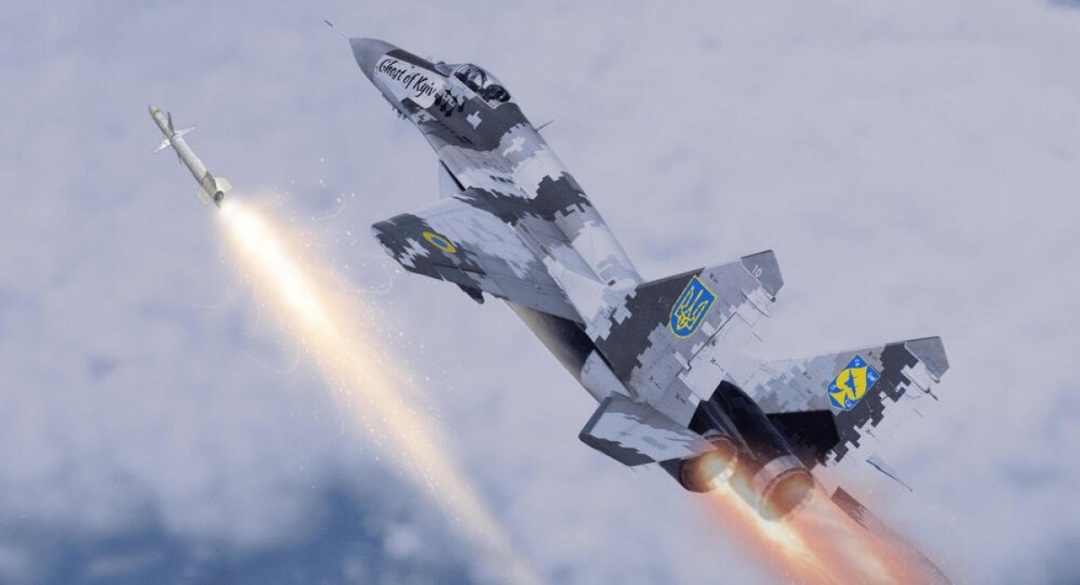
The Air Force of Ukraine adapted the MiG-29 to launch the AGM-88 HARM
In mid-September, the Strategic Communications Department of the Armed Forces reported that the Ukrainian military shot down the Iranian-made Shahed kamikaze drone for the first time. Since then, such drone attacks on civilian and energy infrastructure have intensified. Ukraine once again began to raise the issue of "closing the sky." But this time, Ukraine was heard. Finally.
From October and until now
In mid-October, Germany handed over the first IRIS-T air defense systems. After that, Ukrainian air defenses were strengthened at the expense of American NASAMS. Spain and France provided the corresponding complexes —Hawk and Crotale NG air defense systems. NATO handed over dozens of drone jamming stations. In general, in addition to the mentioned systems, domestic air defenses now consist of Western-made weapons complexes, such as Stormer, Gepard anti-aircraft guns, Stinger, Starstreak, and Mistral MANPADS, as well as Soviet-era S-300, Buk, S-125, Tor, Osa, Strela-10, Tunguska, Shilka, etc. Obviously, soon we will have even more: the USA will transfer the Patriot air defense/anti-missile system.

The IRIS-T SLM complex
Of course, many more things can be listed. For example, note the regular transfer of ammunition, armored vehicles, UAVs, helicopters, small arms and other weapons, radars, ammunition, etc. However, this article isn’t about these numbers. The main thing is to show the dynamics. And, as we can see, it is quite positive for Ukaine.
FROM DEFENDING KYIV TO LIBERATING KHERSON: UKRAINE’S VICTORIES THAT STUNNED THE WORLD
The enemy planned to "capture Kyiv in three days." Now that 300 days have passed, instead of a blitz victory, the aggressors lost what they captured in the first days of the full-scale war. In shame, the Russians fled from Kyiv region, Kharkiv region, and t Kherson, the only regional center that was captured in Ukraine.
Summarizing the year, let's recall the most successful operations run by the Armed Forces of Ukraine, their peculiarity and significance, and how they affected the further course of hostilities.
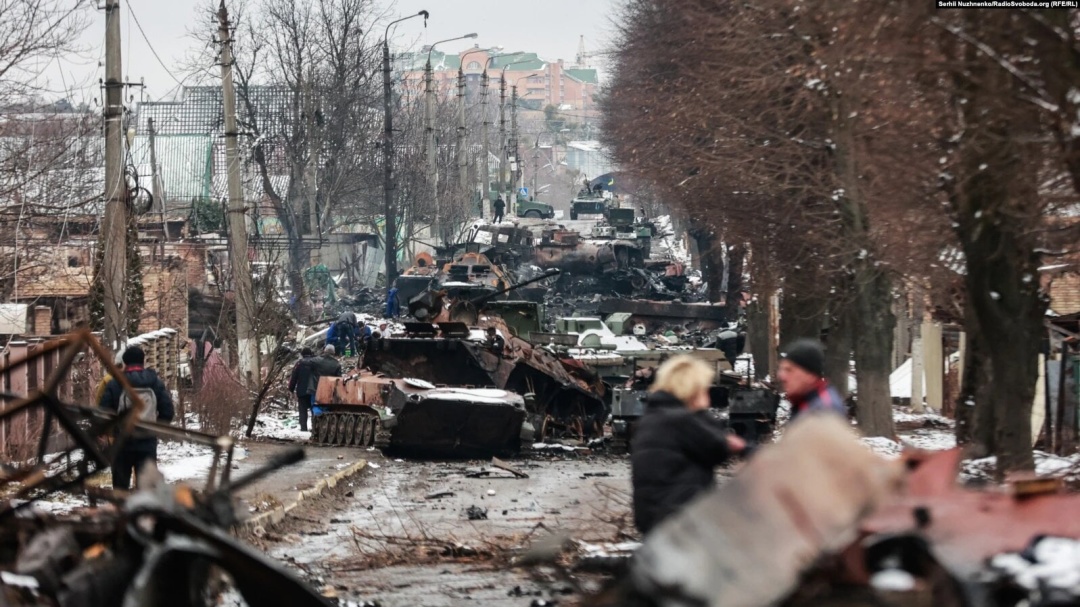
Vokzalna Street, burnt Russian army equipment, Bucha, Kyiv region, March 1, 2022
Battles for Kyiv
The invaders entered Kyiv region from the territory of Belarus and tried to advance toward the capital. The settlements to the west of Kyiv were the most affected ones – Bucha, Irpin, Hostomel, Vorzel, Moschun... There, the occupiers showed their true face - they tortured and killed civilians, raped children, and abused animals. Horrifying footage of Russian atrocities has traveled the world. But apart from terror, the occupiers ultimately failed to achieve any gains.
At that time, the Russian Federation had the ability to strike using virtually all types of air, land, and sea-based missiles. The fire pressure was simply insane. The Russians significantly outmanned the Ukrainians in the area.
"Nevertheless, the Armed Forces forced the Russians to flee from the northern bridgehead. And this is the key feature of this episode of the war. Ukraine command chose the right tactics: 80-90% is defense and only 10-20% is counter-offensive action."
That is, Ukraine chose the tactic of bleeding the enemy.
"We exhausted the potential of the enemy, gave them no opportunity to supply to their advanced units. Our subversive groups constantly operated in the enemy rear. Of course, there were many other tactical maneuvers due to which the enemy was forced to flee this territory: the Russian army did not hold out for a month and at the end of March, they withdrew from Kyiv, Chernihiv, and Sumy regions. That’s even in spite of the fact that they received plenty of material and technical support from Belarus. But this did not help them. With their logistics routes cut off, being subjected to constant fire pressure with the impossibility of advancing closer to the capital and feeling the looming threat of an operational encirclement — the enemy was forced to flee, unable to deliver solid defense," recalls Kovalenko.
Pavlo Lakiychuk, head of military programs at the Center for Global Studies Strategy XXI, says: "It's no secret that our partners and the whole world were convinced that the Moscow mob would crush Ukraine, if not in three days, then in three weeks. But they never did! With some superpowers, at the cost of incredible sacrifices, we stood! We endured the most difficult three days. We withstood the most difficult week. We endured the worst month. And the invulnerable enemy rolled back..."
A new concept was born in military art – "gesture of goodwill" – that is, escape, which is passed off as something else. And Ukraine witnessed such "gestures" on the part of the Russians repeatedly over the following months.
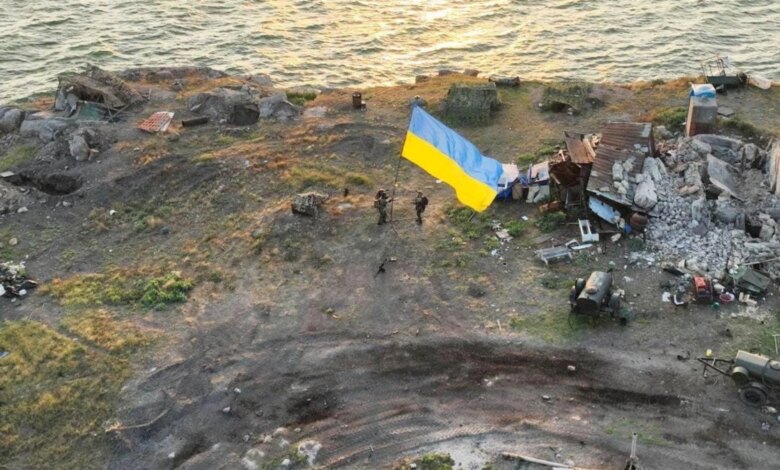
The Ukrainian flag flying on Snake Island
Liberation of Snake Island
At the beginning of the invasion, the Moskva cruiser, the Russian Black Sea flagship, took part in the capture of Snake Island. Then the Russians offered the defenders of the island to surrender, and they responded with a legendary phrase (“Russian ship, f*ck off” – ed.) This phrase has actually predicted the vessel’s fate. On April 13, the cruiser was hit by two missiles launched by the Neptune coastal missile complex.
And already on June 30, Ukraine liberated Snake Island, a strategically important point that provides an opportunity to observe the entire northwestern part of the Black Sea, coastal settlements, and trade sea routes.
"These events are really important. Because the Moskva missile cruiser was a truly unique ship that the Russian Federation will not be able to restore soon. And I’m not even talking about building a new one," says Oleksandr Kovalenko.
The Russian fleet had three such cruisers. Now there’s two left. The Moskva became the first destroyed flagship in the last 40 years of wars and conflicts. So much for a record...
As for Snake Island... This operation demonstrated how the Armed Forces can force the occupiers to flee without even deploying its units to combat.
"Without landings or assaults, only with constant firepower – methodically and daily – we forced the Russian invaders to flee, thus completely destroying their plans," emphasized the military expert.
The expulsion of the enemy from the northwestern part of the Black Sea, which was accompanied by the sinking of the Russian fleet’s flagship carrying a symbolic name Moskva (Moscow – ed.), became Ukraine’s first symbolic victory.
"Although the strategic importance of depriving the enemy of dominance at sea is small, it is extremely important for intercepting the strategic initiative in the war. But still, the most important thing in the sinking of the Mosvka and the liberation of Snake Island was the mental victory for the Ukrainians,” Pavlo Lakiychuk notes.
Lakiychuk also mentioned an old sailor saying, which says that ships should not be named after capitals.
"It will lead to nothing good, oh, it won't. However, of course, this is only a superstition. We believed in our own strength, we believed in the power of Ukrainian weapons," Lakiychuk is convinced.
Counteroffensive in Kharkiv region and liberation of Kherson
In September, the Armed Forces launched an impressive counteroffensive in Kharkiv region. Back in the summer, Ukraine led an offensive in the Kherson direction and sent certain signals. Then residents of Kherson region were called to evacuate, and the president publicly gave an order to the Army to liberate Kherson region. So the Russians expected an escalation on this part of the front.
In the end, the successful information campaign yielded results — the Russians found themselves under threat of encirclement and began to flee from Kharkiv region en masse. The Armed Forces of Ukraine quickly liberated Balaklia, Kupyansk, Izium, and Vovchansk – almost the entire Kharkiv region. Also, they captured a record amount of enemy equipment. Russia has ironically almost become the largest supplier of heavy weapons to the Armed Forces of Ukraine...
And after Kharkiv region, a counteroffensive took place toward Kherson. On November 11, the Armed Forces entered the city and pushed Russian troops back to the left bank of the Dnipro.
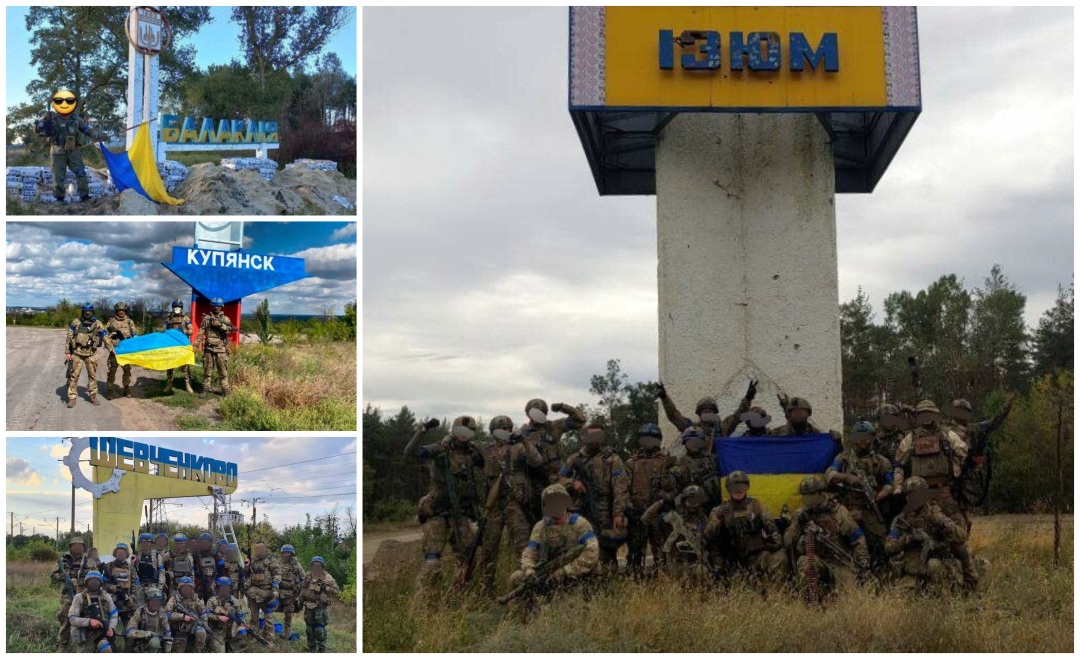
Kharkiv counteroffensive of the Armed Forces of Ukraine
"The counteroffensive in Kharkiv region is a separate story in general, which will certainly be included in military textbooks. The pace of the liberation of such a large swath, more than 8,500 square km, perhaps can’t be compared with anything else,” says Oleksandr Kovalenko. “In addition, it was in the Kharkiv region, or rather in the Izium district, where the largest armored group of the Russian occupation troops was amassed."
We saw how the successful use of mobile assault groups, as well as the cutting of the main logistical arteries and the daring actions of the Armed Forces of Ukraine forced the enemy to flee and abandon their fully operable and armed tanks.
"This is a record-breaking operation that deserves the attention of military experts at the world level," emphasizes Kovalenko.
But the right bank of the Dnipro River in Kherson region was liberated due to a long-term operation. It consisted of several stages, which were implemented gradually, starting as early as May.
"We exhausted the enemy's units so much that they had no opportunity to continue holding the right bank. We made them run. This is somewhat reminiscent of the situation on Snake Island: constant fire influence, pressure on positions, destruction of control and support systems, destruction of logistics. Another brilliant operation by the Armed Forces."
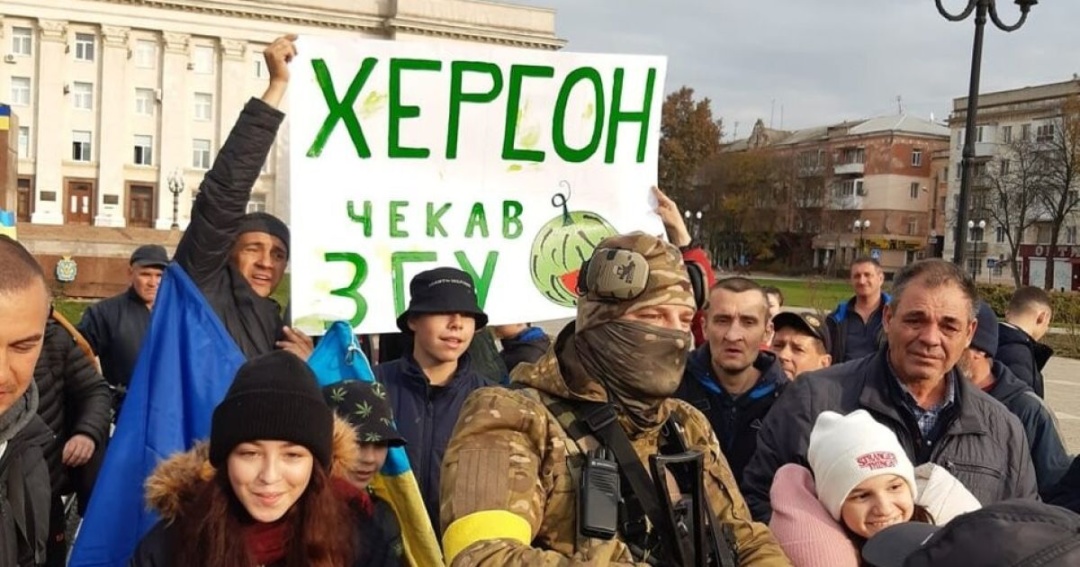
Kherson was waiting for the Armed Forces
Meanwhile, Pavlo Lakiychuk puts the operational and strategic operations of the Armed Forces of Ukraine in the Kharkiv direction and on the right bank of the Dnipro in the same line.
"Just as the Battle of Stalingrad and the Battle of the Kursk Arc in World War II, despite their different nature and geography, became links of a strategic operation whose purpose was to deprive the enemy of a strategic initiative, so did the Kharkiv and Kherson counteroffensive operations, despite the fact that they were completely different in terms of planning and the nature of their implementation, the composition of the forces involved, and the time frame, ultimately, had the goal of seizing the strategic initiative from the enemy, imposing their own agenda on them. And it succeeded," emphasizes the head of military programs at the Center for Global Studies Strategy XXI.
Strikes on enemy strategic airfields
Early December, Russian military airfields in Ryazan (Diaghilev) and Saratovo (Engels) were hit. They are one of the elements of the Russian nuclear deterrent forces, the nuclear triad that was supposed to demonstrate to the whole world the Russian nuclear might and of which Putin was incredibly proud. Ukraine has not officially taken responsibility for those "explosion incidents". At the same time, there were no refutations either.
But the main thing here is different. It turns out that Russian strategic aviation is extremely vulnerable to external attacks - although it was supposed to be protected better than the Kremlin. Strategic bombers can be disabled by cheap drone strikes; the cover of important air defense airbases is set up very poorly. And the most important thing is that the whole world saw this, including the United States and Europe, which have been repeatedly intimidated by the Russian nuclear stick.
"The mentioned incident can be compared with something like the explosions in Sevastopol Bay or on the Kerch Strait Bridge. All this is a demonstration that there is some force, let's call it an UAV, that can exert influence on the objects of the Russian occupiers in their deep rear. Isn't that a shame?" asks Oleksandr Kovalenko.
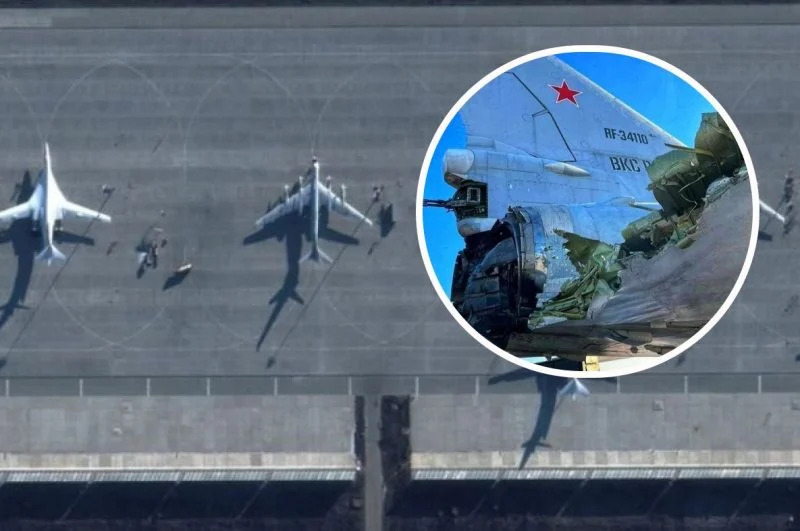
Ukraine has demonstrated that it can strike the enemy's military facilities more than 500 km deep into its territory
The answer here is absolutely obvious. When starting the so-called "special military operation" in Ukraine, the Russians did not even fathom it turning into hostilities on their own territory. Pavlo Lakiychuk says that this "SMO" was supposed to become for ordinary Russians just an exciting action movie on TV, where "good little green men" erase imaginary "Ukrainian Nazis" from the face of the Earth. "Let’s go, that’s what we have to do with them,” the "deep people" in Russia was supposed to exclaim from their armchairs. But...
"The explosions in the occupied Crimea, on the Kerch Strait bridge, at airfields and ammunition depots far in the rear of the Russian Federation became a shocker, a cold shower on a red-hot head,” emphasizes Mr. Lakiychuk. “Strikes on deep enemy rears made the aggressor think about the prospect of retaliation. The predictions of Generals Zaluzhnyi and Zabrodskyi came true: the main advantage, the ‘center of gravity’ of the aggressor, which must be deprived of it, is impunity. It is impunity that is the ‘center of gravity’ of the Russian occupiers from a military point of view.”
Yes, we cannot yet adequately respond to the enemy effort due to limited resources. But it is quite possible to oppose the enemy's ability to act in a similar way and at a similar range.
"An example of such an approach is the physical transfer of hostilities to the temporarily occupied territory of Crimea, to military facilities in the depths of Russian territory," the military expert convinces.
It is clear that the above is far from a complete list of successful operations completed by the Defense Forces of Ukraine over these 10 months of full-scale war. Obviously, the most important and brightest victories are still ahead. They will be preceded by more difficult days and weeks. However, in order to defeat the enemy today, it is extremely necessary to obtain the weapons of victory from Ukraine’s partners.
"I know how to defeat this enemy. But I need resources. I need 300 tanks, 600-700 BMPs, 500 howitzers," says the Commander-in-Chief of the Armed Forces, General Zaluzhnyi.
And Ukraine also needs modern air defense equipment, planes, artillery and ammunition for it.
"I am sure that we will have it. The international terrorist and aggressor must be punished! Victory will be ours!" added the Commander-in-Chief Pavlo Lakiychuk.
Myroslav Liskovych, Kyiv


